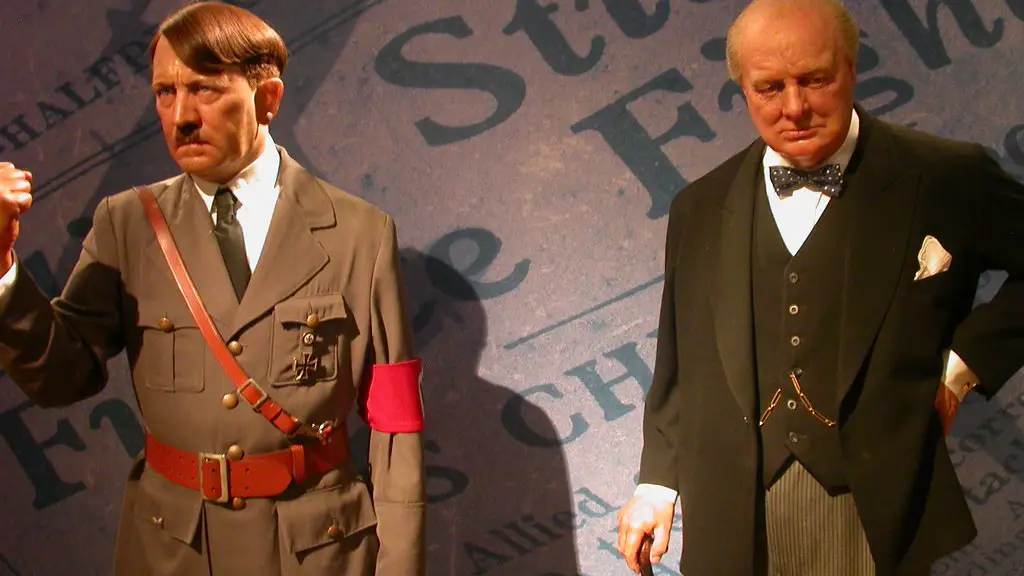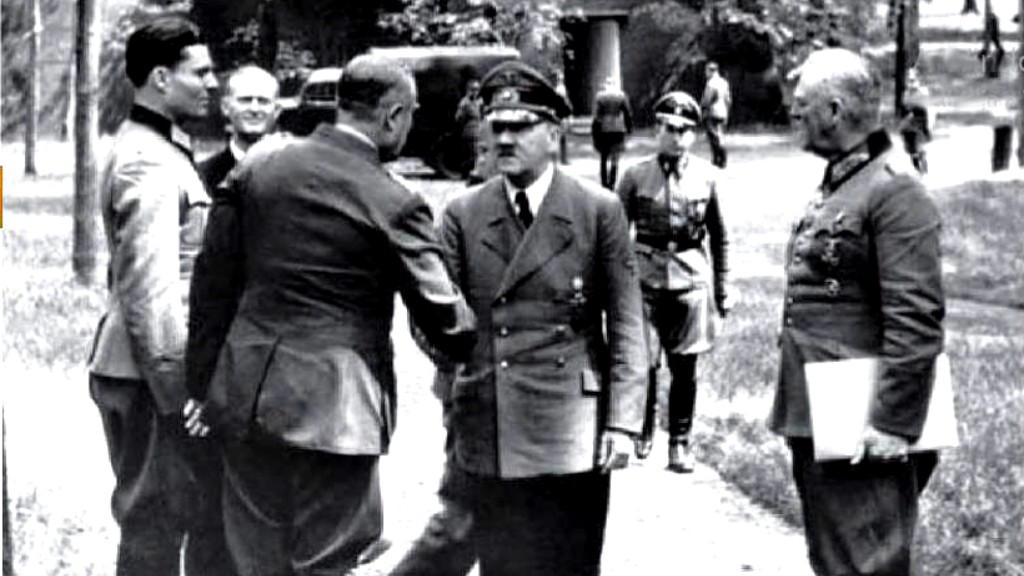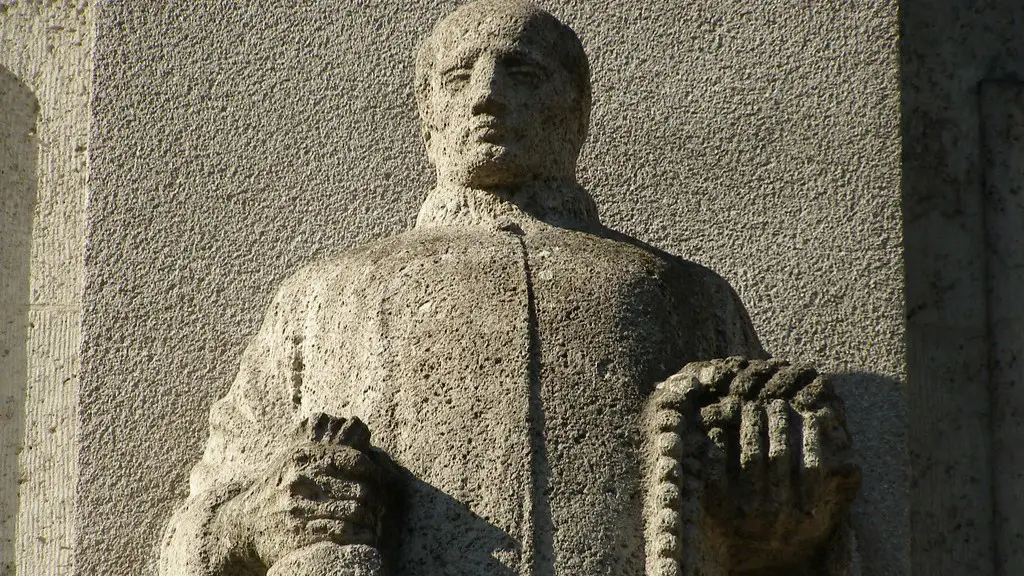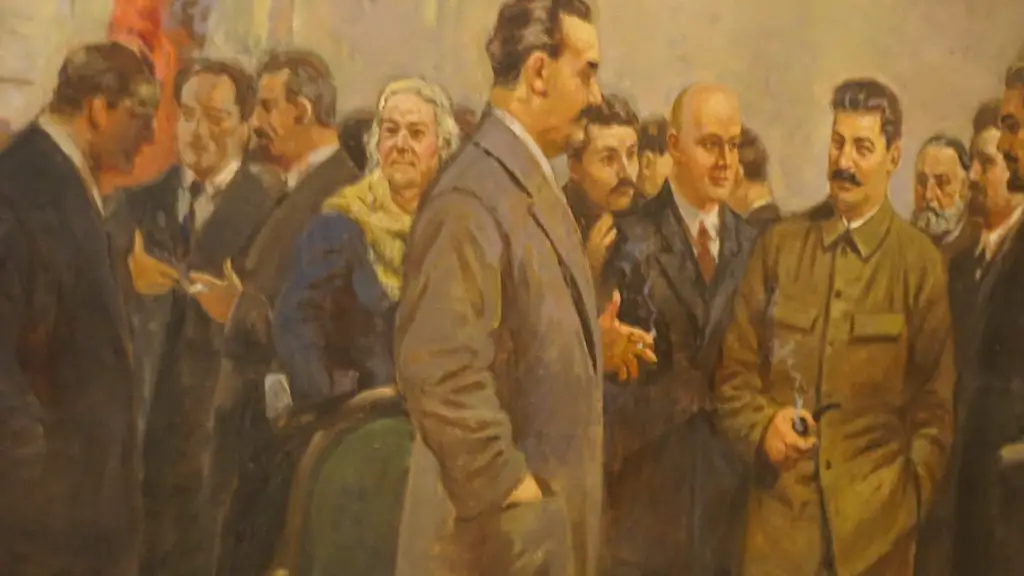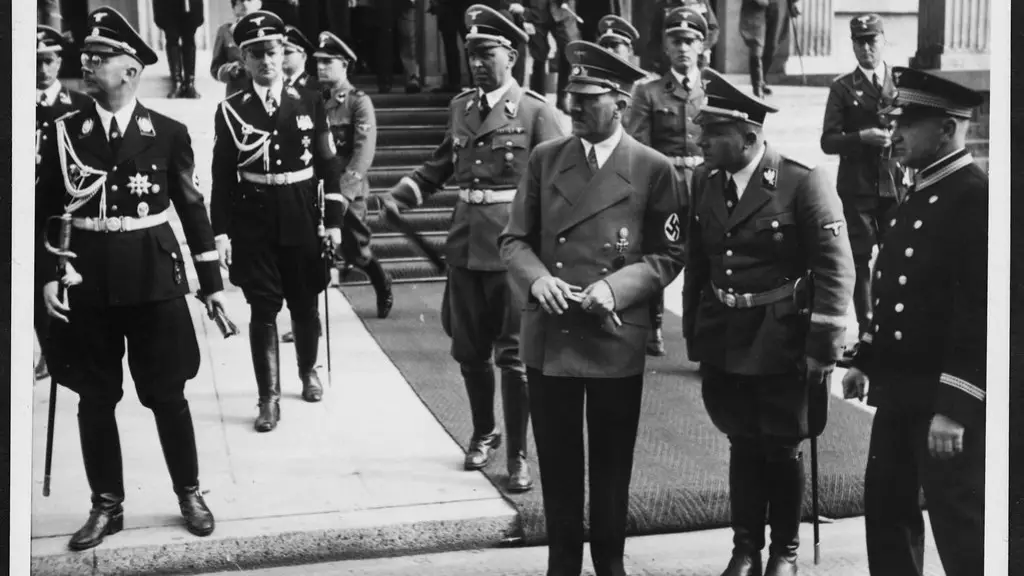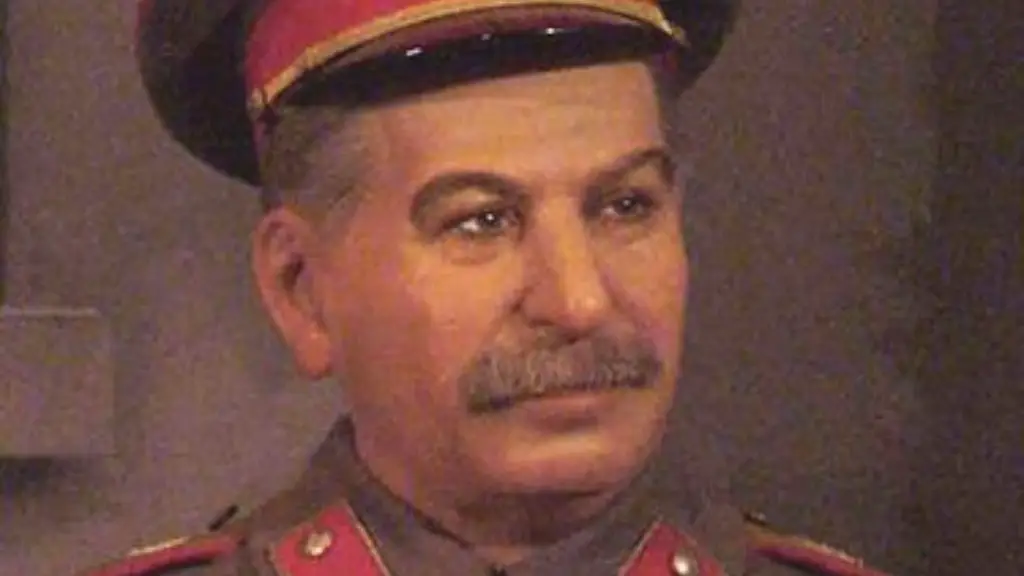Adolf Hitler’s rise to power in Germany was a slow process. It began in 1919 when he joined the German Workers’ Party. He quickly rose in the party ranks and became its leader in 1921. The party was renamed the National Socialist German Workers’ Party (Nazi Party) in 1920. Hitler’s rise to power was helped by his aggressive rhetoric and his ability to appeal to the German people’s desire for a strong leader. The Nazi Party grew in popularity and by 1933, Hitler was appointed Chancellor of Germany. Hitler’s ascent to power was complete when he was named Fuhrer in 1934.
After the end of World War I, Adolf Hitler returned to his native Germany. He was disappointed with the Treaty of Versailles, which had placed strict limitations on the German military, and he began to agitate for a more powerful Germany. Through his skillful rhetoric, Hitler became a popular speaker on the political circuit. In 1923, he attempted to overthrow the German government in a coup known as the Beer Hall Putsch. The coup failed, and Hitler was imprisoned. While in prison, he wrote his political manifesto, “Mein Kampf,” which outlined his plans for a stronger Germany.
After his release from prison, Hitler slowly began to gain more power within the German government. In 1933, he was appointed Chancellor, and in 1934 he assumed the title of Führer, or leader, of Germany. Hitler quickly began to implement his dictatorship, and his policies led to World War II.
What was Hitler’s title when he came to power?
Adolf Hitler was the leader of the Nazi Party and the dictator of Germany during World War II. He rose to power in 1933 when he was appointed chancellor of Germany, and took the title of Führer und Reichskanzler in 1934. Hitler initiated World War II in Europe by invading Poland on 1 September 1939, and was ultimately defeated by the Allied powers in 1945.
The national referendum held on 19 August 1934 confirmed Hitler as the sole leader of Germany. All power was centralised in Hitler’s person and his word became the highest law. Nazi Germany was founded on the principles of totalitarianism and dictatorship, and these principles were reflected in the way the government was organised and operated. The Nazi regime controlled every aspect of German society, and the German people were subjected to strict controls and surveillance. The Nazi regime was characterized by its aggressive expansionism, and its policy of racial segregation and discrimination. The Nazi regime also implemented a policy of forced labour, and millions of people were forced to work in Nazi Germany’s war industries.
What was Hitler’s car called
This is a very rare and unique car, and it is very interesting that it is being auctioned off. It is sure to draw a lot of interest from collectors and history buffs alike. It will be interesting to see how much it sells for.
The existence of Hitler’s son is unconfirmed, but there is evidence to suggest that he did have a son with a Frenchwoman named Charlotte Lobjoie. Jean-Marie Loret was born in March 1918 and died in 1985, aged 67. He married several times and had as many as nine children. If Hitler did have a son, it is possible that he was unaware of his existence.
When was Germany at its strongest?
The years 1941 and 1942 were the high point for the German army. The army controlled an area from France to deep into Russia, and from Norway to western Egypt. The army was successful in many battles and was able to advance its territory. However, the army was eventually defeated in the Battle of Stalingrad in 1942, which turned the tide of the war.
The recapture of Narvik on 28 May 1940 was the first major defeat of the war for Nazi Germany. This defeat signaled the beginning of the end for the Nazi regime, as the Allies began to gain momentum in the war. The fall of Narvik also meant the loss of valuable resources, including iron ore and other minerals, which the Nazis needed for their war effort.
Why was Hitler’s mustache so short?
There is debate as to when Hitler first started using the toothbrush style mustache. Alexander Moritz Frey, who served with Hitler during the First World War, claimed that Hitler wore the toothbrush style in the trenches after he was ordered to trim his moustache to facilitate the wearing of a gas mask. However, there is no concrete evidence to support Frey’s claim.
If you’re in the market for a classic car, you might want to consider the Mercedes-Benz. This luxurious car has been fully restored and could fetch up to $7 million. Whether you’re looking for a vehicle to show off or one to take on the open road, the Mercedes-Benz is sure to turn heads.
Where is Hitler’s Mercedes today
The Canadian War Museum is home to a wide variety of historical artifacts, including a Mercedes 1Av 148697 that was used by Hitler on 19 July 1940. This particular car is a significant piece of history, and it is on display for the public to view.
The Koenigsegg Jesko is a hypercar that was released in 2023. It is one of the fastest supercars in the world, with a top speed of 248 mph. It is also one of the most expensive cars on the market, with a price tag of $3 million.
What is Hitler’s illness?
There is still some debate surrounding Hitler’s exact diagnosis, but it is generally agreed that he did suffer from idiopathic Parkinson’s disease. No indication for postencephalitic parkinsonism was found in the clinical symptoms or the case history. This means that Hitler’s Parkinson’s was not caused by a viral infection of the brain, as was the case for many other sufferers of this disease during that time period. Hitler’s diagnosis does not change the fact that he was a terrible dictator who is responsible for the deaths of millions of people.
August Kubizek was a close friend of Adolf Hitler’s during their youth in Linz, Austria. He later wrote a book about their friendship entitled The Young Hitler I Knew. Kubizek was born in 1888 and died in 1956.
Is Adolf still a common name
The name Adolf became very unpopular after the Nazi dictator took power in 1933. The name was barely used after 1942.
Germany had four key fatal weaknesses in the Second World War. These were:
-The lack of productivity of its war economy
-The weak supply lines
-The start of a war on two fronts
-The lack of strong leadership
What country is the strongest in ww2?
The German Army was able to defeat the Allies in September 1939 due to its superior armament, training, doctrine, discipline, and fighting spirit. The German Army was better equipped and better prepared than the Allies, and this allowed them to win the battle.
Ulbricht was the first leader of the German Democratic Republic, serving from 1949 to 1973. He oversaw the country’s transition from a Soviet-occupied zone to a socialist state. Ulbricht was a staunch supporter of the Soviet Union and worked to keep East Germany aligned with Moscow. He was removed from power in 1973 by the Soviet Union and replaced by Willi Stoph.
Warp Up
Adolf Hitler rose to power in the early 1930s as head of the Nazi Party in Germany. After being appointed Chancellor in 1933, he quickly consolidated power and began implementing his fascist agenda. By the early 1940s, Hitler had complete control of Germany and was well on his way to achieving his goal of total world domination.
There is no one answer to this question as the path to Hitler’s rise to power was long and complex. However, some key factors that contributed to his eventual rise to power include his time spent in prison where he wrote Mein Kampf, his strong oratory skills, and the fact that he was able to appeal to a broad range of people. Additionally, the economic conditions in Germany at the time were also conducive to Hitler’s rise as people were desperate for change.
